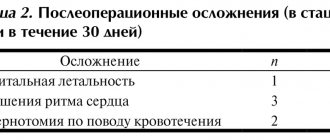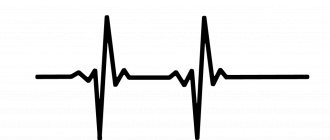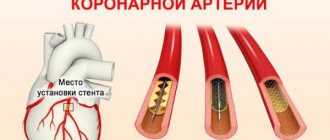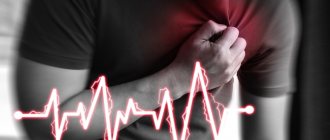The muscles of a healthy baby should be in a certain tone and tense when exposed to irritants. Muscle hypotonia in a child is manifested by weakening of muscles and a decrease or complete absence of muscle response to an irritating factor.
This syndrome is not an independent pathology. It is associated with impaired conduction of nerve impulses and accompanies diseases of the central nervous system (spinal cord and brain) and damage to peripheral nerves.
It is important for parents to notice muscle hypotonia in time, without attributing it to the phlegmatic temperament of the baby. In Kaliningrad, muscle hypotonia in children is successfully treated by specialists at the Edkarik clinic. You can make an appointment with a pediatric neurologist at a time convenient for you.
Hypotonia in newborns
Hypotonia, or decreased muscle tone, is usually found at birth or in infancy. If your baby has hypotension, he may be born lethargic, have difficulty sucking at the breast, and get tired quickly when feeding. When examined, such a child’s arms and legs easily extend at the joints; he can spread his hips almost without resistance to an angle of more than 90 degrees. A child with hypotonicity of the muscles of the cervical and shoulder girdle has difficulty controlling the head and has delays in the development of grasping skills and fine motor skills.
As a child with reduced muscle tone gets older, he or she will experience difficulty speaking, have incorrect posture, hypermobility in the joints, and decreased physical endurance.
Why is muscle hypotonicity dangerous?
Muscular hypotonia is fraught with inhibition of the baby’s physical development. Children with uncorrected problems are very different from their peers. They are weakened, lethargic, passive, and they develop crawling and walking skills later than their peers.
Signs of muscle hypotonicity, undiagnosed in early childhood, manifest themselves at school age in the form of impaired posture, stooping, and poor handwriting. Children who had decreased muscle tone in infancy have difficulty performing physical exercises.
In the absence of treatment or its ineffectiveness, muscle hypotonia is dangerous due to the development of complications in the form of:
- delays in psychomotor development;
- curvature of the spine;
- posture disorders;
- muscle weakness and dystrophy.
Causes of hypotension in young children
Hypotension can be caused by congenital diseases of the nervous or muscular system. Sometimes hypotension is the result of birth or neonatal trauma, hypoxia during childbirth, an acquired disease, or an inherited disorder. Also, a decrease in muscle tone may be associated with physiological immaturity of the nervous system. There are situations when the cause of hypotension cannot be determined. Some babies are born with hypotension that is not associated with other diseases or conditions. This is called benign congenital hypotension. These children have minor developmental delays or learning difficulties. Physical and speech therapy can help a child regain tone and develop normally or reduce developmental delays.
It is important to know that hypotension can be caused by dangerous diseases that affect the brain, central nervous system or muscles:
Cerebral palsy
In many cases, these chronic diseases require lifelong care and treatment.
Hypotension can also be caused by genetic diseases:
- Down syndrome
- Prader-Willi syndrome
- Tay-Sachs disease
- Trisomy 13
- Hartnup's disease.
Why does muscle hypotonicity occur?
Congenital muscle hypotonia is often diagnosed immediately after the baby is born. During an examination by a neonatologist, a decrease in the tone of the muscular system and the inability to flex the joints are detected. Congenital hypotension is one of the symptoms of the underlying disease and goes in parallel with neurological disorders and stigmata of dysembryogenesis.
Congenital muscle hypotonicity in children is observed in the following pathological conditions:
- Down syndrome, Marfan syndrome, Menex syndrome, Leigh syndrome, Krabbe syndrome, Tay-Sachs syndrome and others;
- pituitary dwarfism;
- septo-optic dysplasia;
- non-ketotic hyperglycinemia.
Muscle hypotonia accompanies the following intrauterine development disorders:
- cerebellar ataxia;
- sensory integration dysfunction;
- dyspraxia;
- hypotonic cerebral palsy.
Muscular hypotonicity of congenital origin develops gradually and manifests itself at different rates of progress or regression of the pathology.
Acquired forms of muscle hypotonia occur:
- with genetic abnormalities (metachromatic leukodystrophy, Rett syndrome, muscular dystrophy);
- for mercury poisoning;
- as a result of past infections;
- for autoimmune disorders;
- after suffering traumatic brain injuries;
- as a complication after vaccination;
- as a result of birth injuries complicated by asphyxia and hemorrhages.
Muscle hypotonia is observed in the clinical picture of hypothyroidism, cerebellar developmental disorders, and Sandifer syndrome.
Muscle hypertonicity in a child
If your newborn baby constantly looks away, clenches his fists, has difficulty moving, and has obvious emotional signs of general discomfort, he may be suffering from hypertension.
Muscular hypertonicity is a condition in which a child's muscles are constantly tense, causing you to be unable to easily bend or straighten your child's legs and arms. If you touch the baby’s muscles, they will be dense to the touch, like those of a well-pumped bodybuilder. It is important to know that hypertonicity is a pathological condition.
In a newborn with hypertonicity, muscle tension can noticeably weaken only during sleep. As your baby grows, you may notice that he or she feels “stiff” and has trouble rotating his or her body or bending his or her limbs. In infants prone to hypertonicity, this condition may be caused by a startle reaction to an unexpected sound, movement or touch. Hypertonicity in fear is characterized by excessive arching of the head and jerky movements of the arms and legs. Sometimes severe fright can lead to a permanent state of hypertonicity.
Children suffering from hypertension will have a delay in physical development due to the fact that tense muscles prevent him from moving normally. As a result, a baby with hypertonicity will learn to crawl and walk much later. If the problem of hypertonicity is not eliminated, the child’s gait will be very unstable, he will spread his legs wide when walking. Also, children with hypertonicity may suffer from congenital hip dislocation and sleep apnea due to impaired muscle function.
Muscular dystonia in palliative practice
Contents Relevance of the problem of caring for patients with spasticity
Types of dystonic tone disorders
Drug dystonia
Dystonic attack and convulsions - how to distinguish?
Chronic spastic conditions
Prevention of complications of spasticity
Principles of positioning a person with limited mobility
In palliative medicine, the number of patients with neurological pathologies is growing. But diagnosing spastic conditions with convulsive attacks, neurolepsy, and pain syndrome is often difficult, especially in nonverbal patients.
Anastasia Evgenievna Primakova talks about acute and chronic disorders of muscle tone, drugs used in different cases, and non-drug methods for the prevention and correction of spastic conditions
, neurologist, Moscow Multidisciplinary Center for Palliative Care, Department of Health.
The article was prepared based on the materials of the webinar “Spasticity in palliative care, why it is dangerous and how to avoid it.”
Relevance of the problem of caring for patients with spasticity
More and more patients with neurological problems are appearing at the Moscow Multidisciplinary Palliative Care Center. Their life expectancy is higher than that of terminal cancer patients, and their management should be structured differently. At the same time, spastic conditions can occur in almost all immobile bedridden patients.
What help do patients with spasticity need? Care, positioning and symptomatic treatment.
First of all, spastic conditions lead to the development of contractures and stiffness. And this happens surprisingly quickly. Dislocations also occur, such as paralytic dislocation of the hip joints. The hip joint is large. It can withstand a heavy load, but in a state of dysregulation it enters a virtually irreversible state, which provokes pain. When the patient's body is deformed, he also experiences psychological suffering - it is difficult to see his body as completely different. The entire microsociety of the patient, especially his family, also suffers when they see how the person has changed overnight. It is especially difficult when it comes to young post-traumatic patients, when changes occur tragically, quickly and irreversibly.
The inability to change position also leads to trophic disorders.
Simple manipulations, such as a pillow under the knees and the like, are a means of preventing pain, deformities, and bedsores. This is not difficult, but often such moments are simply not given attention, and dealing with the consequences is much more difficult than doing prevention.
Types of dystonic tone disorders
In neurological patients, chronic spastic conditions predominate (spasticity, hyperkinesis, atony), but acute ones also occur - dystonic attack, serotonin syndrome. Local dystonia occurs in our patients, mainly as a consequence of drug overdose.
What is an acute dystonic attack
? This is a sharp involuntary increase in muscle tone to the point of rigidity. It is especially important to differentiate a dystonic attack if the patient is nonverbal.
What can trigger an acute dystonic attack?
- Pain
- Fear
- Negative emotions
- Maintaining one pose for a long time
- Constipation
- Gastroesophageal reflux disease (GERD) at night
- Initiation of movement
- Neurodegenerative conditions
- Hypoglycemia
Treatment of mild, moderate and severe pain in palliative patients Tatyana Vladimirovna Kravchenko, chief freelance palliative care specialist in Moscow, talks about the features of drug therapy in palliative patients with different types of chronic pain Tatyana Kravchenko
Anesthesia
If a patient has a stomach ache, if he has constipation or heartburn, you will always see either a localized or a generalized increase in muscle tone. This is one of the symptoms included in the nonverbal pain rating scale.
If a person lies in one position for a long time, especially a person with limited mobility who cannot roll over onto his back on his own, this can lead to the development of a dystonic attack - simply because the patient cannot change position. Even healthy people experience this: when you wake up at night, it is sometimes difficult to turn around right away.
Communication skills with patients 10 tips for doctors during consultations Anna Sonkina-Dorman
Communication
In some patients, especially small and thin patients, a dystonic attack can be triggered by an incorrect movement by a nurse or caregiver. For example, you wanted to change a person’s diaper or examine his stomach, you sharply pulled his knee, and in response he suddenly moved somewhere. This can happen because regulation is disrupted, and the person responds as best he can. Mostly generalized. The simpler and more archaic a person’s reactions are, the more generalized they are. And vice versa, the older the patient is, the more mature his cerebral cortex, the more differentiated his reactions are. Therefore, always try to warn the patient, say: “Now I’ll take you by the leg,” then gently touch this leg and show what you are going to do, do not rush.
In neurodegenerative conditions, when dysregulatory disorders increase, the patient eventually returns to those archaic reactions that I spoke about. This is very difficult to observe, because usually these are patients with intact intelligence - for example, with multiple sclerosis - and for them it is very difficult.
Hypoglycemia also sometimes causes not only psychomotor agitation, but also tension with tremor. This can be seen in severe, bedridden patients. When a person has not eaten for a long time or was given insulin without giving him breakfast, and he is shaking and is all wet - this may simply be a manifestation of hypoglycemia. In this case, you need to feed the person as soon as possible.
Drug dystonia
Violation of tone can be associated with the use of medications: polypharmacy in palliative practice is common, and many medications in combination with each other increase muscle tone.
There are acute and chronic drug-induced dystonias.
Acute drug-induced dystonia
Many drugs acting on nerve and muscle conduction can cause:
- Tricyclic antidepressants
- Levodopa preparations
- Antiepileptic drugs, phenytoin, carbamazepine
- D-receptor blockers: neuroleptics, cerucal
For example, antiepileptic drugs are often used in the adjuvant treatment of chronic pain syndrome. We must remember that in large doses they can cause dystonic attacks. Neuroleptics also cause a very diverse range of reactions, including neuroleptic syndrome, especially if they are given without an anticholinergic corrector, Akineton, or cyclodol - this can even lead to death. Haloperidol should be used carefully in older people.
Serotonin syndrome often occurs with an overdose of such drugs in combination with adjuvant antidepressant therapy. They can cause complications such as oculogyric crisis (rolling of the eyes for up to several hours), myoclonus, local or generalized tics, orofacial dyskinesia (often caused by metoclopramide in children).
Chronic conditions, such as extrapyramidal hyperkinesis, are seen in psychiatric hospitals and in psychiatric hospitals. Therapy adjustment is sometimes not carried out there, and patients receive the same dosage for years.
Early
(at the beginning of antipsychotic therapy) and
late
(malignant neuroleptic)
neuroleptic syndromes
are the most severe complications of antipsychotic drugs: they cause cardiac and multiple organ failure, hyperthermia, agitation, and arterial hypertension. This condition is very difficult to correct.
Serotonin syndrome
(serotonin intoxication) is a consequence of an “overdose” of narcotic drugs, antidepressants, or the simultaneous use of narcotic drugs and amitriptyline. Its manifestations are similar to pain syndrome in nonverbal patients. This happens when it seems to us that the patient is unwell, and we increase the dose of narcotic drugs, but he gets worse. The most pathognomonic symptom of serotonin syndrome is extremely oily, greasy skin. Other symptoms:
- hyperthermia,
- arterial hypertension,
- tachycardia,
- sweat,
- mydriasis,
- hyperreflexia,
- diarrhea,
- clonus,
- excitation,
- muscle rigidity.
In general, the whole complex of acute multiple organ failure. This is a difficult situation, and it is important to keep it in mind if the doses of drugs are already at their maximum and the patient is not getting better. In this case, if possible, you need to reduce the dosage, maybe (with caution!), change the antidepressant to another, maybe remove it altogether - an individual approach is needed here. This condition is relieved with diazepam, clonazepam, i.e. drugs that reduce muscle tone. But the first step is to reduce the dosage.
Dystonic attack and convulsions - how to distinguish?
Any dystonic attack is tension, decreased cell excursion and hypoxia. And hypoxia is a trigger point for the development of seizures: we can see a person with a dystonic attack, and after 20 minutes he may have a seizure. This is not uncommon.
What is the difference between a dystonic attack? First, we need to think about the history: Seizures are more likely to occur in a patient who has a history of epilepsy or has been diagnosed with a brain tumor. A manifestation of general cerebral symptoms may be convulsions (then we will see vomiting, and so on).
A convulsive attack has a distinctly acute onset, and a dystonic attack can last for hours.
As a rule, during a dystonic attack the patient shows that he is ill, and during convulsions he is unconscious - if we open his eye, we will see miosis. Dystonic attacks are longer: a convulsive attack lasts 5-7 minutes and ends, and a dystonic attack can last for a long time, as long as the patient has the energy to keep the muscles tense. After a seizure, a person usually falls asleep.
In a hospital setting, to treat a dystonic attack, it is most convenient to give the patient diazepam. In pediatric practice, we often give Relanium either as an enema or intranasally - this is a convenient route of administration. In this case, the absorption is the same, the dose does not need to be increased, as with oral administration. Any of these conditions can be easily treated with anesthetic drugs.
Chronic spastic conditions
Unfortunately, spasticity is an integral problem in almost all acute neurological deficits, except for spinal muscular atrophy and ALS (although contractures and spastic disorders can also occur with them). With neuropathy in the later stages, Guillain-Barré syndrome, dystonic states, in particular, painful hyperkinesis, can also develop. This is very difficult for patients: they develop depression, apathy, and lack of volition.
How to deal with such cases? The most basic approach in palliative medicine is that when we see something we don’t understand, we first need to relieve the pain.
Pain syndrome can manifest itself in different ways, especially in non-verbal patients: one lies and suffers silently, while the other will scream if the heel is simply itchy. You should always keep in mind that a person may be in pain, because pain is subjective.
Half the cases of spasticity that I see in children are relieved by pain relief. When children live in a family, they know how to show that they are uncomfortable, because those close to them react to it. And deprived children who live in boarding schools often have no experience of positive communication. Therefore, we start with pain relief, then see what remains of this spastic state: it may pass. If some spasticity remains, we will work with it.
There are not many conservative methods: only three drugs that relieve spasticity are widely used: mydocalm, sirdalud and baclofen. They act in different ways, so they can be combined to affect different “floors” of muscle tone regulation.
Mydocalm
- a systemic drug. It works for quite a long time, but we cannot vary the dose widely because its maximum dose is not high.
Sirdalud
is a good drug, but it is fast-acting and can cause breathing problems and a drop in blood pressure. If there is a need to maintain the effect throughout the day, then the dose should be divided into 4-5 parts. There is no point in giving sirdalud twice a day unless it is a long-acting form. This drug is used for defence, for radiculitis as symptomatic therapy. The effect of sirdalud wears off quickly, so it is inconvenient to give it for a long time. But at night, for example, it’s quite appropriate. If the patient lives on baklosan, you can give him sirdalud at night so that he can sleep.
Clonazepam
has many side effects, and it is not always appropriate to treat muscular dystonia with them.
But if the patient has muscular dystonia combined with epilepsy, this drug will be enough to relieve tone and have an anticonvulsant effect. diazepam
can also be given in a short course of five days.
Dantrolene is used for spasticity
. This is a calcium blocker, the only drug that suppresses malignant hypothermia.
Trunxen
It is convenient because it is similar to clonazepam, but does not have the same sedative effect. It is not available in Russia yet.
Radical treatment methods
Dystonic attacks are not yet used in our country.
The only thing that could be used in palliative practice is botulinum toxin.
It facilitates patient positioning and care, and reduces pain. In other words, this is what the future is.
After all, when we give tablet drugs that reduce tone, we increase dysphagia, and aspiration begins in a patient who could swallow. And this is how we “bypass” swallowing.
Methods for assessing dysphagia and preventing aspiration in palliative patients What nuances should be taken into account when conducting the “three sips test” in palliative patients, what are the predictors of dysphagia, how to assess and prevent the risk of aspiration Varvara Brusnitsyna
Symptomatic treatment
In general, drugs that reduce tone are given to control swallowing function. The easiest way to control it is with the “three-sip test”: give the patient a glass of water and ask him to take three sips. We note at what sip he choked. This will mean that dysphagia is present, and we need to think about what to do with this patient.
If this is a patient with multiple sclerosis, it is better not to wait until he starts choking and gets pneumonia, but to plan to place a gastrostomy tube at a time when the patient is still in good condition, while there are no aspiration problems. There is no need to torture a person so that he starves or is afraid to drink (such patients are afraid that they will choke, which is why they eat only pureed food and do not drink water, which causes dehydration). It is necessary to place a gastrostomy tube on time and not torment the patient with tubes for a long time.
Chemical neurolysis
- This is an “ancient” procedure, but nevertheless, it makes sense in the case when neuromuscular transmission is interrupted at the level of the trunk. This has been used for patients with neuroma in the stump after amputation.
Prevention of complications of spasticity
Prevention includes:
- Correct patient positioning
- Active and passive gymnastics
- Involving the patient in self-care
- Psychological help
- Establishing alternative communication with the patient
- Team approach to the patient
- Treatment of infections
- Individual route of assistance
First of all, preventing complications comes down to correct positioning and selection of shoes. For example, in hospices in Hannover (Germany) all patients wear special sneakers to prevent foot deformities. It works like this: in the morning the patient woke up, he was dressed in a casual dress and shoes were put on his feet. Even if this is a bedridden patient, he is dressed - after all, it is daytime and he is awake. And in Russia, patients lie without panties for years, because it is believed that since they are lying down, they are in bed. It’s as if they don’t live, but sleep all the time. This approach needs to be changed.
We must remember that the foot can become deformed in 10 days! To prevent foot deformities, you need special shoes for waking and soft orthoses for sleeping. Any shoe with a firm heel will do. For example, a thumb abductor orthosis can be made from any cardboard; it does not require large financial investments. It’s a simple thing, but at night a person sleeps with such a device, and in the morning his finger is more mobile.
Gymnastics, occupational therapy, self-care and overall patient independence are very important.
In the context of psychological assistance, I would like to talk about alternative communication. For people who do not speak, it is very important to convey their message to others. Among our patients there are many people with motor aphasia: they understand everything, but cannot say anything. Such patients are constantly in a depressed state - they are tormented by the inability to speak. Therefore, we must try to figure out how a person can communicate if he has at least one hand or finger.
There is such a technique in the practice of pediatric palliative care. We ask: “Are you thirsty? Do you want to sleep? Your right hand means yes, your left hand means no. Look at your right or left hand!” This does not require expensive equipment or a computer. Some children have “yes” and “no” stickers placed directly on their knees. We need to think about this, we need to involve specialists in alternative communication.
It is necessary to ask the patient's opinion about the simplest things: do you want to wear these pants or others? Do you want me to open the window or close it? This is respect for the individual. We often don’t think about this; it would be faster for us to dress, undress, and turn a person. This passive position insults the person. As a result, he usually becomes autistic and becomes depressed. We should try to avoid this.
Principles of positioning a person with limited mobility
Video: Moving a patient in bed How to correctly pull a person in bed and move him from one end of the bed to the other
Lena Andrev
Care
Positioning
- this is a separate big topic. The more comfortable the patient’s position, the fewer problems he will have: correct positioning is the prevention of contractures and the prevention of pain.
It is recommended to place a chart of positions above the patient's bed in accordance with their daily routine. Our patients mostly lie down. From time to time we sit them down: they sit for a while, then lie down again. An occupational therapist or physical therapy doctor can hang a note above the patient’s bed with pictures of pillows or bolsters. Each of them is numbered, and it is indicated in what place and in what position to place them. The physical therapist comes only once to try everything on the patient. And then: the pillows are numbered, and the staff understands how and what to do - there is no need to invent a wheel every time. There is also a mode for changing positions. There is a rule that you cannot feed a person in a lying position. Even a person with a gastrostomy tube must be fed in a sitting position.
There are also many lying positions. When a person lies flat on his back, as most of our patients do, his head and shoulders are high on the pillow, his legs are extended, his anterior abdominal wall is taut. Thus, tidal volume is reduced by 40% and spasticity increases. When we gather him “in a pile” and place two pillows in the letter “A”, bring his shoulders up, pick up his knees, the tidal volume increases. Even though he has a rigid chest and its excursion is zero. That is, this is the prevention of respiratory complications.
Supine position (for resting, not for feeding)
The main thing is to remember one simple law: what hangs gets tired, what lies down relaxes. If the hand hangs, it will get tired, which means our task is to put something under it. Then she will relax.
Therefore, the basic principles of positioning are as follows:
- Everything is bent
- Everything leans
- Nothing hangs
When a person who has been lying on his back for years is placed on his side and stomach, his back is finally rested.
Side lying position
The side position is a comfortable position for rest and activity, since it is possible to perform manipulations with your free hand. To comfortably position a person on their side, the following conditions are needed:
- Support along the back, between the legs
- It is convenient to use a Y-shaped pillow according to the patient’s height, so that continuous support creates a “nest” around the body and gives a feeling of full support. But such a pillow should not be thicker than the patient.
- The upper leg should rest completely on the support (anything that hangs gets tired)
- Sometimes an analogue of “swaddling” helps with hyperextension of the arms, a wide scarf around the body, a figure of eight around the legs.
The prone position, in addition to rest, can be used to facilitate the evacuation of sputum. But it is not enough to just turn him over on his stomach; pillows must be placed under him in a certain way to create a kind of “shaft” on which the person is placed on top. How is this positioning accomplished?
- A large cushion is placed under the stomach, sometimes under the forehead too - to provide support and so that the head does not hang down,
- Sometimes a bolster or wedge under the chest is enough if the person holds his head himself.
Stomach pose
The position is as if a person is on all fours. The “on all fours” position is very comfortable, patients love it. Gastrostomy and tracheostomy are not contraindications for lying on the stomach and side.
Pose in a stroller.
The basic principles for positioning the patient in a wheelchair are as follows:
- To sit in a wheelchair, the patient must be able to support his head, or a head support is used.
- If the stroller is too wide for the patient and the pelvis dangles, long-term sitting will lead to fatigue, pain, and spinal deformation.
- Thick pads must be placed between the walls of the stroller and the pelvis. If a person does not hold a sitting position well, then up to the armpits.
- The patient must be restrained. Even the weakest patient can suddenly bend over, move, or flinch.
In general, posture in a stroller is a difficult question, because strollers are the same, but people are different. Let’s say a patient with amyotrophic lateral sclerosis has no control over her body at all. It “folds” on the chair: as you sit it, it moves in that direction. Therefore, our task is to hold the patient, place bolsters tightly on the sides between her and the stroller, so that she does not fall over or slide off.
For patients with severe deformities, there is such a technique: for them, a backing from a special material is cut out from a cast of the body. It's expensive, of course, but it's worth it.
Proper positioning does not always require complex and expensive items. The main thing is attention to the patient and understanding how comfortable and convenient it is for him to be in a particular position.
Another problem is that medical staff often do not take care of themselves and do not use available means to move patients. Our employees are the most valuable thing we have, so we need to make their work easier: use lifts, ceiling systems, transfer boards, and other means of moving. It is unacceptable for nurses to turn patients around alone.
In films about Western hospices, I saw how a physical therapist or nursing staff easily climbs onto the bed, kneels behind the patient and quietly moves the patient. I didn’t believe that I could single-handedly transfer a rather heavy-set woman from a lying position in bed to a chair. But if you use force correctly - do not tear the patient’s arms from the front so that she falls on you, but simply climb onto the bed, behind her, kneel in a certain way and so, turning her from one side to the other, bring her to the edge of the bed, climb over forward and transfer her to a chair. This is possible, this can be learned, but until we know how to do this, our task is to do such things not alone and not to strain ourselves.
By the way, very soon Anastasia Evgenievna will be able to visit in person.
On July 28-29 , she will be one of the speakers at an interactive online intensive for specialists on the topic “Assessment and treatment of neurological deficits in palliative care . It is conducted by the Moscow Multidisciplinary Center for Palliative Care in the format of a video conference on Zoom.
You can find out more details and register here.
The text was prepared using a grant from the President of the Russian Federation provided by the Presidential Grants Foundation for the portal About Palliative, an educational project about palliative care of the Vera Charitable Foundation.
Causes of hypertension in children
Hypertonicity can be hereditary in nature and caused by mutations in a specific genetic sequence. Such mutations negatively affect the production of glycine in the child's body, which helps reduce the stimulating effect of neurons on muscle fibers in order to ensure their relaxation after tension. When something interferes with the functioning of glycine, the body's ability to control muscle relaxation is weakened.
To diagnose hypertonicity (for example, in order to distinguish hypertonicity from epilepsy), a neurologist may prescribe to a child:
- Electromyography (EMG), which will examine electrical impulses in the muscles.
- Electroencephalography (EEG) can be used to assess a child's brain activity and its effect on muscle tone.
- Molecular genetic testing can determine the presence of specific mutations in the GLRA1 and SLC6A5 genes.
Treatment of hypertension in children
To treat hypertension, your doctor may prescribe:
medications, physiotherapy, massage and osteopathy, aquatherapy. Consultation with a family psychologist is also important. Learning how to cope with emotions and disappointments and how to remain calm will be an important factor in creating a positive psychological climate in your child's environment.
- Massage and stretching exercises can significantly relax the muscles and provide relief to the child.
- Aquatherapy in warm water also promotes better muscle relaxation and overall calming of a child with hypertension. Aquatherapy sessions can be performed as early as 3 weeks of age.
- Thanks to the course of treatment, education of the child and parents, the child, as he grows up, will learn to cope with any restrictions and will be able to lead a full life.
Dystonia
Muscular dystonia is a disorder characterized by impaired motor activity of the child and abnormal development of muscle tone. Muscular dystonia can be caused by genetic disorders or birth trauma that leads to hypoxia of the child's brain or cerebral hemorrhage.
Other causes of acquired dystonia in infants may include:
- infections
- side effects of certain medications the mother took during pregnancy
- toxic effects on the fetus
The disorder is caused by impaired or immature connections between the nervous system and muscles. With dystonia against the background of general hypotension, when performing passive movements, individual muscles in the child become spastic (strongly contracted). In a child, this looks like a “combination” of hypertonicity of some muscles with hypotonicity of others, which leads to the appearance of writhing movements. This condition can appear after strong experiences, excitement, feelings of fear, in an unfamiliar environment, with sharp sounds or when touching a child with cold hands.
In addition to uncontrolled muscle movement, other symptoms of dystonia include leg cramps, involuntary neck movements, and uncontrolled blinking. Symptoms usually affect only one side of the body and stabilize within five years. However, accidents and injuries can worsen the disease.
The extreme severity of muscular dystonia is observed in children with cerebral palsy, which is a cause of disability.
There is no specific treatment for dystonia. Doctors use a complex of therapeutic measures, including drug and physical therapy, massages, osteopathy, and the help of a psychologist. Mild and moderate dystonia responds well to restorative treatment if it is started in a timely manner and carried out regularly.
The most important thing in the treatment of dystonia: the earliest possible diagnosis and initiation of therapy. The best results are observed if the diagnosis is made in the first months of life.
Diagnostic methods
Increased muscle tone in adults has the following symptoms: discomfort when performing habitual movements, which results in muscle stiffness during mobility. Muscle density increases, and there is a constant feeling of tension, tightness or stiffness of movement.
In a child, symptoms of hypertonicity are manifested by clenched fists, legs, and arms pressed to the chest. Also, in a baby, signs of impaired tone are the fetal position, which lasts longer than 2 weeks, the fact that the baby holds his head straight, and resistance is felt during gymnastics.
The following methods are used to make a diagnosis:
- Examination by a neurologist, therapist, endocrinologist, possibly a psychiatrist;
- Assessment of childbirth in the mother, as well as clarification of the characteristics of intrauterine development;
- General and biochemical blood test;
- Determining the absence of epilepsy and paralysis, as well as taking medications that can provoke an increase in muscle tone;
- EMG;
- CT or MRI;
- Ultrasound of the brain and neck;
- X-ray of the spine;
- Study of cerebrospinal fluid, levels of electrolytes and CPK in the blood.
It is mandatory to establish the root causes of the development of the pathological condition, after which an individual rehabilitation program is drawn up.
Preventative examinations of newborns by a neurologist
An experienced neurologist will be able to promptly diagnose a disease or developmental disorder of a child, prescribe additional diagnostic procedures: functional and ultrasound studies, conduct complex treatment, and involve the required specialists in the treatment process: physical therapy doctor, physiotherapist, psychologist, speech therapist, osteopath and others.
It is important to identify existing diseases in time, in the first months of life, in order to prevent delays in the child’s development or limitation of his capabilities.
The sooner treatment is prescribed, the more optimistic the prognosis will be. Timely, comprehensive therapy will save the child from age-related complications and many psychological problems, ensure his full development and create conditions for achievements in life.
Benefits of going to the clinic
Self-treatment of increased muscle tone may be ineffective or lead to complications, so you need to contact a clinic with a team of specialists. The doctor will prescribe examinations, conduct an examination and identify the exact cause of the pathology. Experts will also help determine whether the complaints are related to increased muscle tone or whether the problem of poor health lies elsewhere.
After the diagnosis is made, an individual treatment complex is selected that suits the specific patient. In case of physiological disorders and poor lifestyle, physiotherapeutic methods and regulation of periods of activity and rest are chosen for treatment. In case of internal or infectious disorders, drug therapy is added and a whole range of rehabilitation measures is developed.
A specialist can also provide advice on preventative measures if you notice that your lifestyle may be contributing to the development of muscle hypertonicity.
We suggest you order the Almag treatment device inexpensively.
Consultation with a neurologist is most effective at home
In order to examine the child and assess muscle tone, the child must be calm and should not cry at the time of examination or before the examination (crying can greatly affect tone). Children with altered tone react more sharply to changes in the environment, unfamiliar smells or sounds. Any fear or agitation of the baby can distort the results of the examination.
Therefore, in order for an examination by a neurologist to be as effective as possible, we recommend calling a neurologist to the newborn’s home.
How to determine decreased muscle tone?
In some cases, manifestations of muscle hypotonicity are not clearly expressed and are not immediately detected by parents and pediatricians. Symptoms may also vary depending on the age of the child and the severity of the underlying disease. During the initial examination of the baby, a decrease in muscle tone is identified as a separate syndrome. To establish the cause of its development, the neurologist prescribes a comprehensive examination of the child and, if necessary, involves specialists of various profiles (endocrinologist, rheumatologist, geneticist, immunologist) as consultants.
Routine observation of newborns by a neurologist
Routine examinations by a neurologist are especially important for infants. During this period, the doctor can identify early manifestations of congenital diseases, such as hydrocephalus, cerebral palsy, malformations of the brain and spinal cord, and timely detect acquired diseases.
To prevent and timely identify possible disorders of the peripheral nervous system, brain and spinal cord, children in the first years of life need to be regularly examined by a pediatric neurologist.
A neurologist should examine a newborn baby:
- In the first 30 days after birth. If there are risk factors, several consecutive examinations are carried out during this period.
- Every 3 months during the first year of life.
- Every 6 months until the child reaches the age of three.
- Annual examinations up to 6 years of age.
- Preventive examinations during the period of adaptation to social life (7-11 years) and active puberty (11-14 years).
When you need to urgently call a neurologist at home
In newborns and children of the first year of life
- In a calm state, when crying or excited, the baby’s hands or chin begin to tremble.
- The baby's sleep is disturbed: there are difficulties falling asleep, shallow and restless sleep with frequent awakenings.
- When the fontanelle bulges.
- If the fontanel is painful, crying when touched)
- With frequent and profuse regurgitation, even with small amounts of food.
- When any convulsions occur.
- If the child has a forced position of the legs: with the toes tucked, or the feet are extended as if the child is “standing on tiptoes.”
- With monotonous crying, refusal to feed, sluggish sucking.
In children older than one year
- For severe or frequent headaches.
- For neck pain.
- If the child complains of shooting or piercing pain in the back when moving.
- For muscle twitching or tics.
- If your child experiences fainting.
- With constant absent-mindedness.
- With forgetfulness, sudden changes in mood.
- If the child experiences unmotivated crying or aggression.
- If speech, reading, or writing impairment is obvious.
- With a sharp decrease or impairment of vision, taste, hearing, and smell.
- With low learning ability, progressive educational retardation.
- With “bad behavior”, uncontrollability.
- With increased fatigue.
- If you see a lack or a sharp deterioration in contacts with other children.
- For bedwetting of urine or feces (for children over 5 years old, if it occurs more than 2 times a week).
- If a change in gait is obvious, refusal to stand on a leg.
- In case of sleep disturbance, if there is difficulty falling asleep.
In case of head injuries, loss of consciousness, severe convulsions, or the child’s condition is unclear, CALL AN AMBULANCE IMMEDIATELY.









